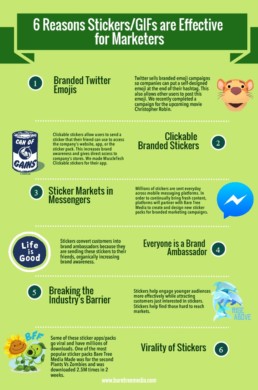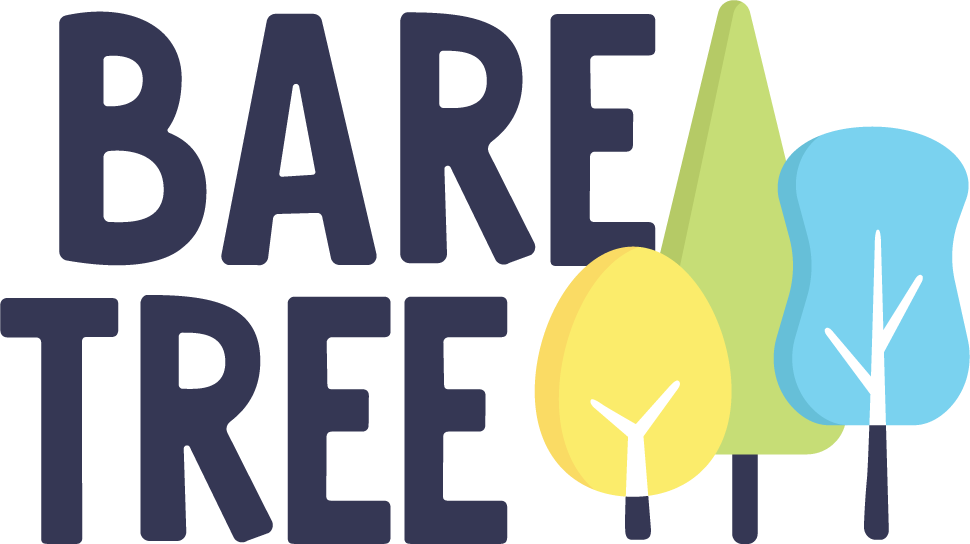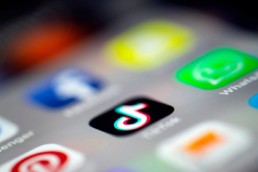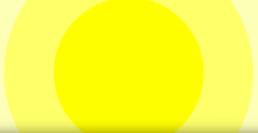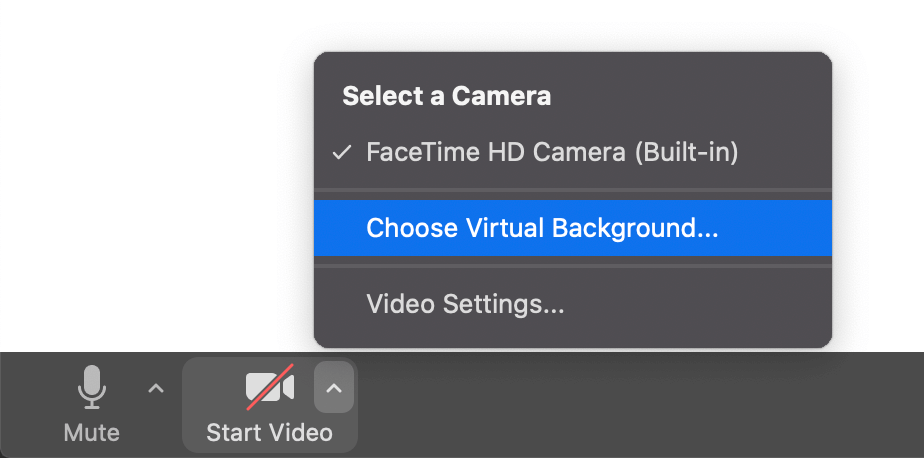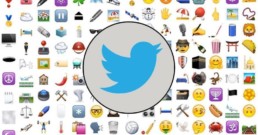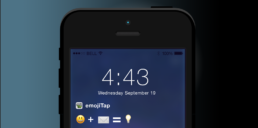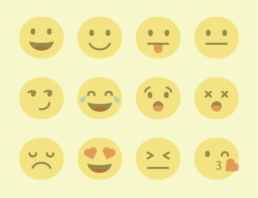Bare Tree Media Partners with TikTok to Bring the Power of AR Effects to Brands
Boston MA – June 25, 2020 – Bare Tree Media, a leader in branded interactive experiences, has been selected by TikTok as a preferred AR (Augmented Reality) design agency partner. As part of the TikTok Branded Effects Partner Program, Bare Tree Media will be assigned to strategize and design TikTok AR Effects for brand campaigns. Through TikTok’s technology and Bare Tree Media’s in-depth expertise in 2D and 3D AR design, this partnership will help to scale creativity and production of AR effects for brands. This partnership builds on TikTok’s newly launched Branded Scan, an innovative format of TikTok’s Branded AR Effect that activates certain visual effects after recognizing a flat image such as a brand’s logo or physical object such as a branded product.
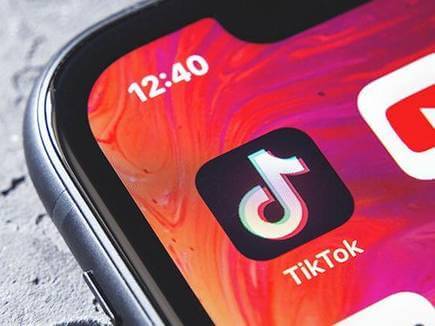
“With the digital landscape always evolving, we are consistently investing in our interactive competencies such as augmented reality,” said Robert Ferrari, President of Bare Tree Media. “We are honored to be selected into this partnership to create branded AR experiences to engage audiences within the popular TikTok platform.”
“Branded Effects give brands the opportunity to interact with Tiktok users in a way that’s engaging and fun,” said Melissa Yang, Head of Ecosystem Partnerships, Global Business Solutions at TikTok. “We’re thrilled to partner with the most creative leaders in 2D and 3D development to bring this playful, immersive experience to our brand partners and the broader TikTok community.”
About Bare Tree Media
Bare Tree Media enables brands to reach, engage and entertain consumers through the creation and digital publishing of branded emojis, messaging stickers, GIFs and augmented reality within popular messaging platforms. As a pioneer in the digital creative and technology sector, Bare Tree Media’s clients and partners include; ABC Television, American Greetings, Apple, Baidu, CBS Interactive, Disney, Duracell, EA, Facebook, Giphy, Google Play, Instagram, King Features, Life is Good, LINE Corp, Lionsgate, Mars-Wrigley, MasterCard, MuscleTech, Paws Inc, P&G, NBC Universal, New England Patriots, Snapchat, Snap-On Tools, SONY Television Pictures, Tenor, TikTok, Twitter, Viacom, Warner Bros, Wimpy Kid, and many more. Brands interested in offering their own mobile messaging apps, mobile stickers, emojis, and augmented reality can go to www.baretreemedia.com or contact Bare Tree Media at info@baretreemedia.com.
The Best of Snap Summit 2020
Like most recent events, this year’s Snapchat Summit was adapted virtually as opposed to existing in a physical space; it might seem like a no-brainer for a company whose expertise is in the digital realm—but if anything, this year’s summit has proven Snapchat’s ambition of bridging the gap between between augmented reality, and reality.
If the theme of Snapchat up until now has been “show, don’t tell” the mantra they’ve adopted moving forward seems to be “experience, don’t show”. What this means for brands is that Snapchat has uniquely positioned itself to allow artists & studios to create unique, branded AR experiences that transcend the digital sphere.
Below I’ve highlighted the features that I’m most excited about, as well as how they can be utilized to elevate users’ AR experiences.
Local Lenses:
These dynamic lenses use real-life locations (whole areas or specific buildings) to create a unified AR experience that different Snapchatters can share, as long as they’re in the same physical space—the first of its kind. In the example above, multiple people are creating a mural of different colors on one shared space using multiple phones. This added expertiental element creates a unified experience that exists wholly online, but that facilitates physical community. This is the first best of both worlds experience.
 Photo courtesy of Snapchat.
Photo courtesy of Snapchat.
Snap Scan & Marker Lenses:
Scan Partners is a powerful tool for brands. It allows the camera to recognize an item and then attaches it to a specific lens. The examples Snapchat used were a plant-identifer that, when clicked, would provide information on how to care for that plant (including links to buy those items). But they can also be utilized by luxury brands in order to create beautiful AR experiences in the physical world, once again blending the 2. Louis Vuitton recently added their logo as a marker lens, which means that when their logo is scanned in real life in Snapchat, a virtual door to their latest showroom opens highlighting classic and current collections in a virtual showroom. Too-Faced marked their 'Born This Way' product packaging—so when scanned, users can try it on virtually. Marker lenses elimiate the need to advertise via Snapcode, as well—the product is the Snapcode.
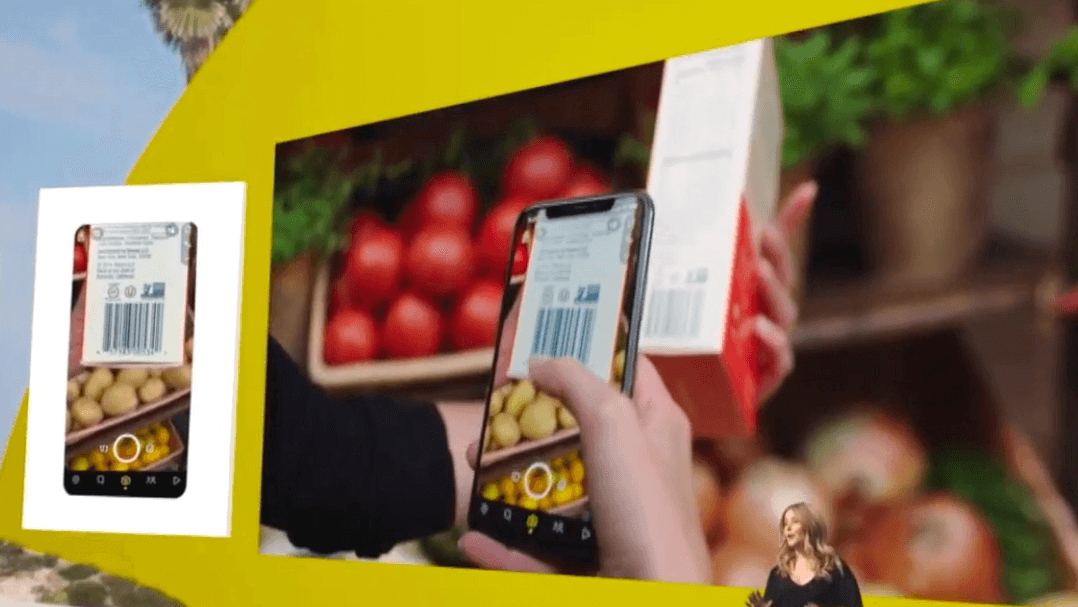
Photo courtesy of Snapchat.
SnapML:
The developer tool now features SnapM (or Snapchat Machine Learning), which lets developers bring their own machine-learning models to power Snap lenses, making what is possible to create limited only to the imagination. This allows for the creation of lenses that were previously impossible (such as the Van Gogh filter below, created by Nicholas Dominici) that would benefit anything from a new movie or video game with a singular aesthetic, to a museum wanting to highlight a current exhibition.
Additionally, this allows the creation of extremely accurate tracking of faces, gestures, feet, and even landmarks such as buildings. Below, you can see the practical application that Wannaby has used: they created a try-it-on filter that lets users see their newest shoe in a variety of colors (yes, that shoe is AR, not real).
In short, SnapML has destroyed many creative boundaries that previously existed—the new “brand experience” is limited (mostly) by what you can imagine vs by technology, as used to be the case.
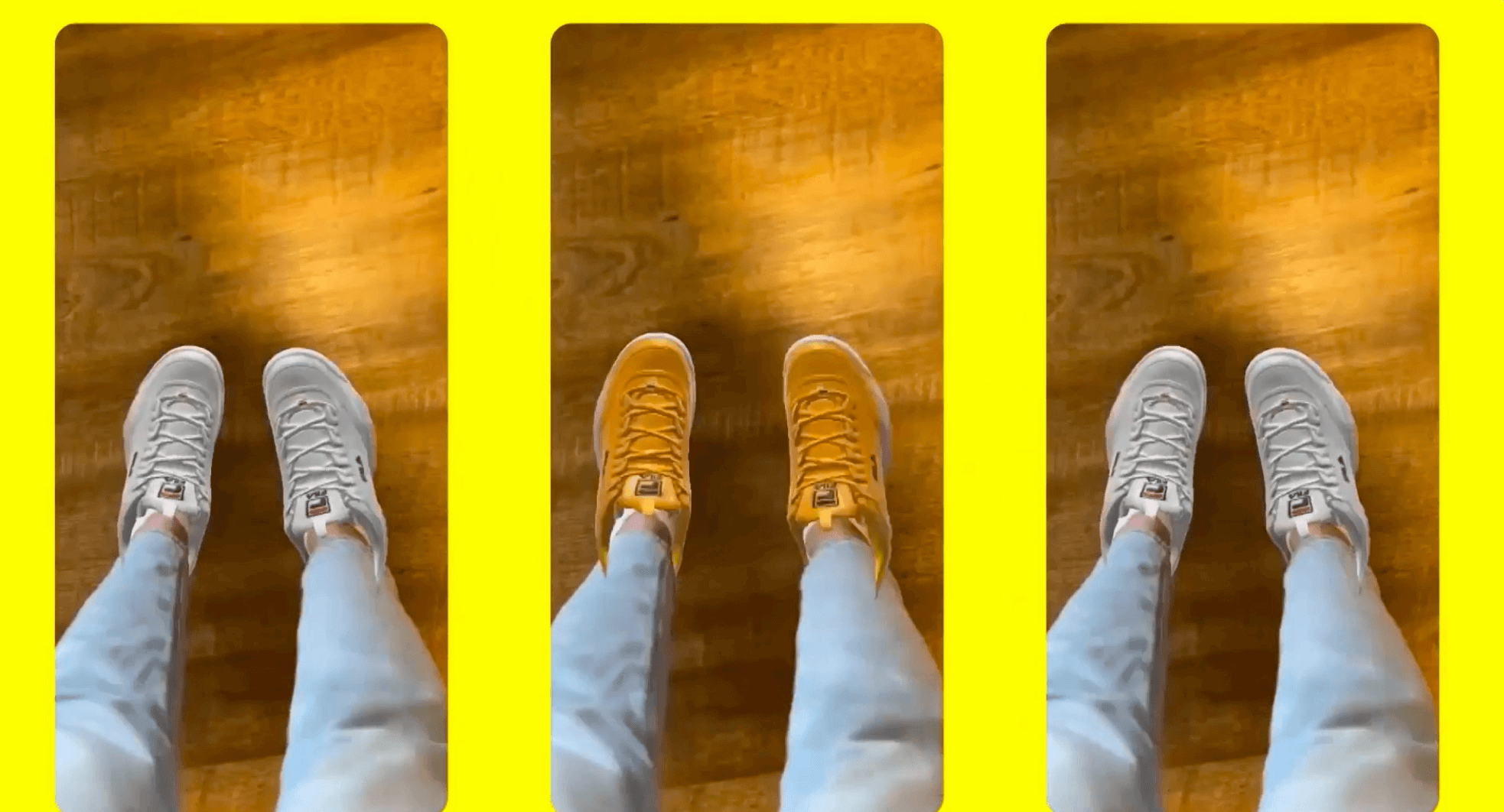 Photo courtesy of Snapchat.
Photo courtesy of Snapchat.
Places:
Snapchat is making it easier than ever to integrate call-to-actions with their app and lenses. One example of this is “Places”, which would lead to an outside-Snap call to action such as ordering a physical product online, whether it’s that new lipstick or food from their favorite delivery spot! This would be especially crucial for smaller businesses that need to receive local support.
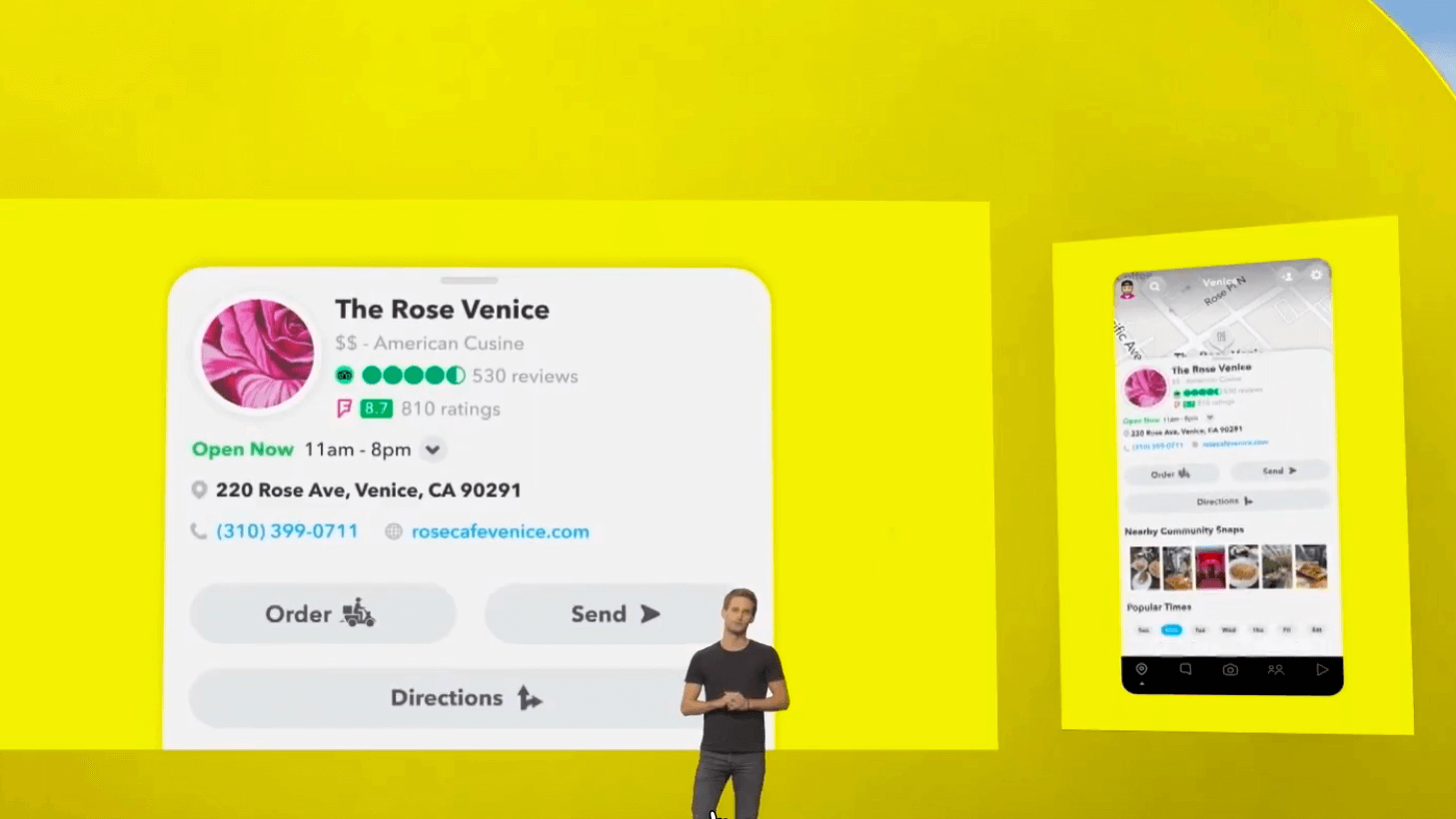 Photo courtesy of Snapchat.
Photo courtesy of Snapchat.
Integration SnapKits:
If your brand has an existing app, Snapchat will now let you integrate their technology with it in order to create a new layer of interaction with your fans. This is more abstract in thought, but can be applicable to any number of brands across any discipline—it’s an equally powerful tool both for those brands within the entertainment industry, and outside of it. Rally Road is an app that is meant for classic car investments, but has integrated Snapchat’s CreativeKit to let users purchase shares in rare items and share them with their friends in a unique AR environment. Atom movie tickets has also utilized this to let its users browse movies, purchase tickets, and choose seats together in one easy experience. There are numerous types of kits available, each with their own unique perks (AdKit, which makes monetizing apps easy with SnapAds, CreativeKit, which allows apps to bring real-time data into Snapchat, and CameraKit, which brings the power os Snapchat camera to your apps).
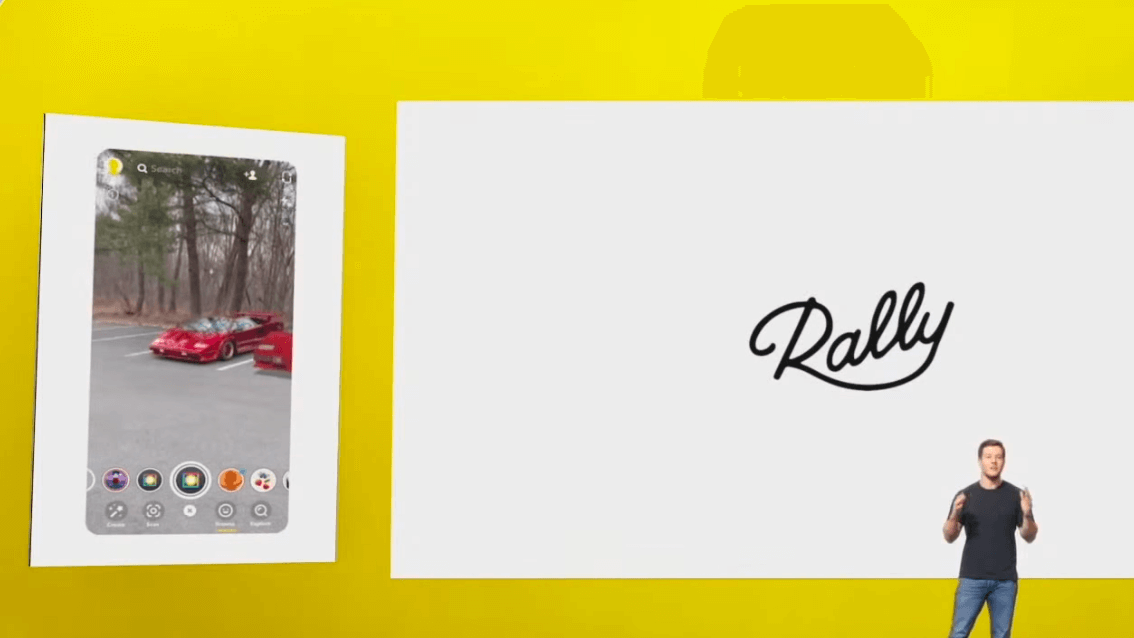 Photo courtesy of Snapchat.
Photo courtesy of Snapchat.
Where Do I Start?
If you're interested leveraging Snapchat for Any of the above uses, a qualified creative studio is your best bet, since we know the ins-and-outs of not only best creative practices to create an attractive filter, but can also help determine which strategy is the way to go when the options can seem endless and equally appealing (especially after this year's summit).
We here at Bare Tree Media would love to collaborate with any artist, strategist, or brand who's just as pumped about these new Snapchat features as we are! You can take a look to see the lenses we've already created.
How to Bring Some Fun to Your Video Calls
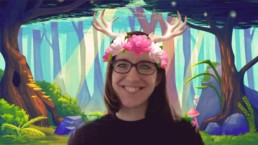
How to Bring Some Fun to Your Video Calls
As we adjust to a new normal, video conference calls have become the number one way to get some quality face time with co-workers, clients and loved ones. If you’ve been like us, you’ve been spending a majority of the time in these calls and want to break up the monotony with a bit fun! Using Snapchat’s desktop app Snap Camera or simple videos, you can add exciting backgrounds and AR effects to your video feed.
How to Add Videos to Zoom
Adding fun videos to Zoom calls is super easy! Once you are in a Zoom Meeting, in the bottom left corner of the window, you will see a ‘Start Video’ button. Click on the up arrow to the right of the icon and select ‘Choose Virtual Background..’
This will bring you to your video settings within Zoom. You will see five default videos from Zoom that you can try out. But if you want something special hit that plus button to the right and choose ‘Add Video’. A finder window will open up where you can navigate to any mp4 video file you have on your computer.
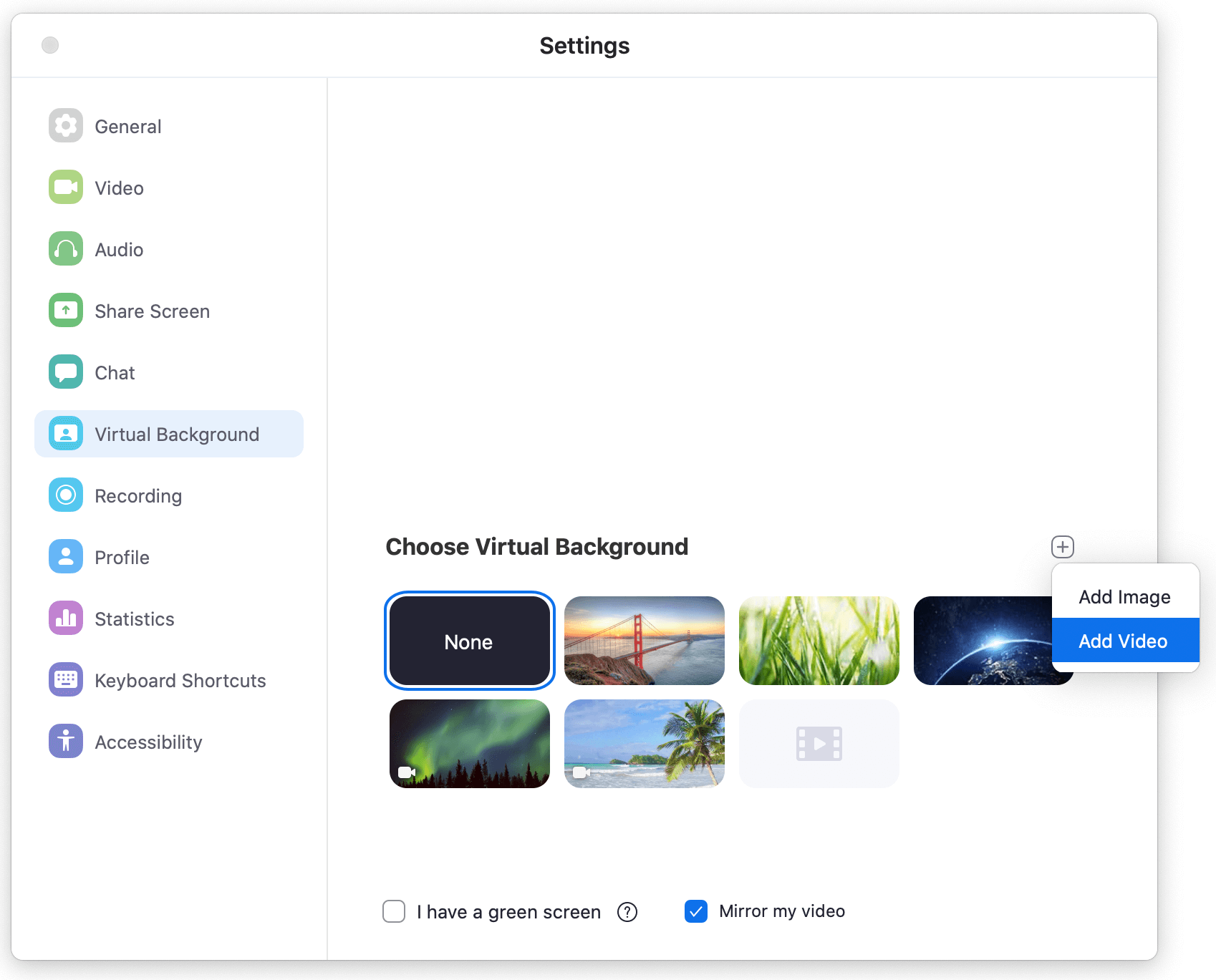
And that’s it! You should now have a fun video playing in the background!
If you’d like to use our enchanted forest video background you can download it right below by hitting the download button. Then right click on the video, hit ‘Save Video As’ and choose where you would like to save the video onto your computer.
How to Use AR Effects
If you’d like to get a little fancier, you can use Snap Camera to add a wide variety of AR effects to some of the most popular video call apps including Google Hangouts, Skype, Twitch and more! Unfortunately Snap Camera doesn’t currently work on Zoom with the latest macOS (though they are working to fix this!) but if you are on a Windows computer you can follow the instructions below for Zoom as well.
First, Install Snap Camera
You can download Snap Camera to your computer here. Once it downloads, double click and follow the instructions to install the application. Snap Camera will automatically open and show a wide range of suggested lenses. Click on any effect to try it out!
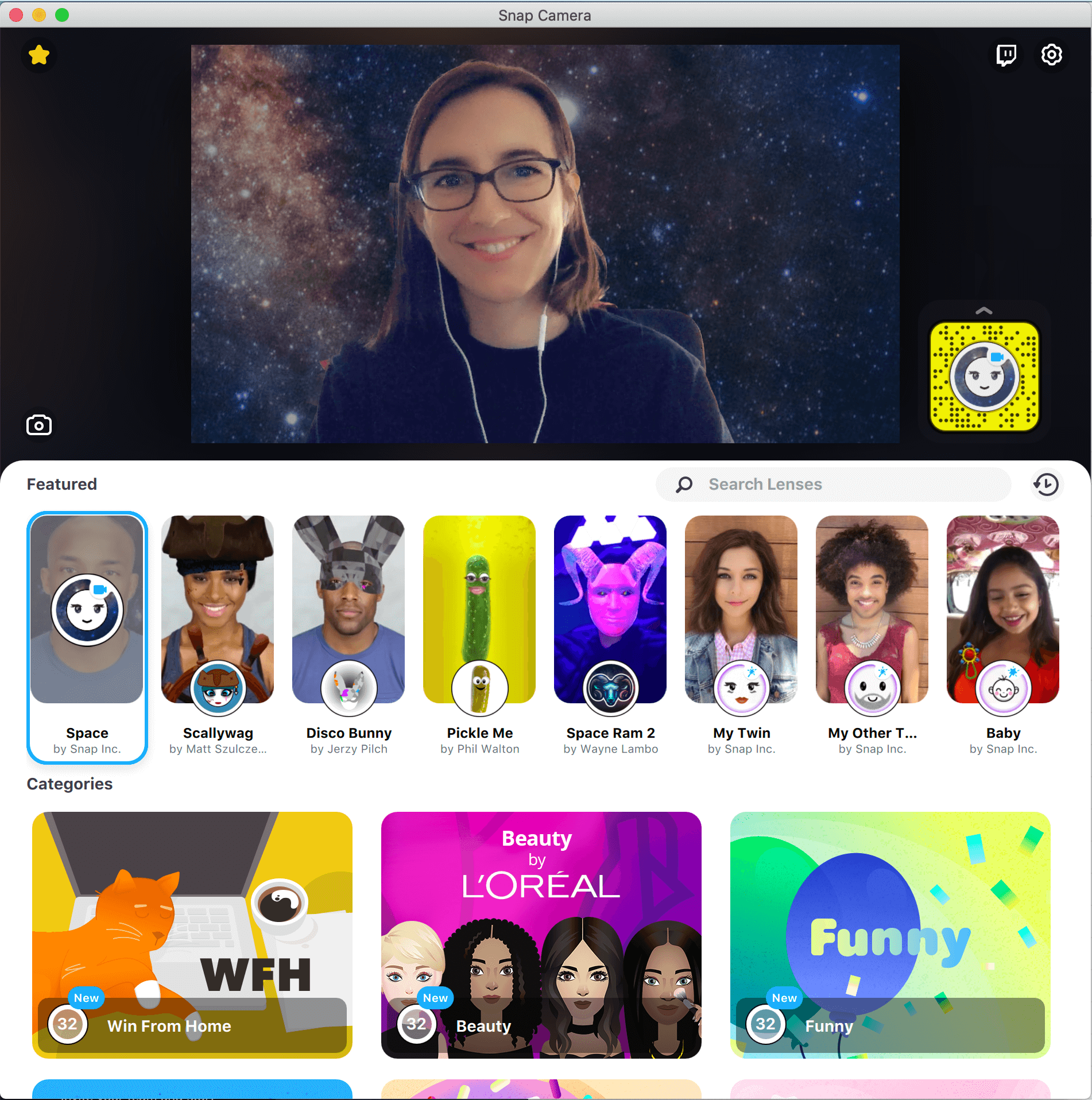
Next, Update your Video Settings in your Video Call App
Once you have Snap Camera setup, open up your video call app of choice and go to the video settings. There you should see a dropdown to select which webcam you would like to use and select ‘Snap Camera’. If you don’t see ‘Snap Camera’ listed you may need to restart both applications or your computer for Snap Camera to appear on the list of options.
Lastly, choose an AR Effect and have fun!
After Snap Camera is selected as the video source, you can pick any AR effect you would like within Snap Camera and it will update in your video call. Try out our enchanted forest effect by searching ‘Enchanted Forest’ or search ‘Bare Tree Media’ to see all of our Snapchat effects!
Interested in having your own custom AR effect or video background created?
Reach out to our team!
Bare Tree Media is a full-service creative studio with a dash of technology and a whole lot of fun! Our mission is to help your brand stand out visually and engage your audience through creative and interactive content. Although we specialize in the creation and digital publishing of branded emojis, messaging stickers, GIFs and augmented reality, our talented artists and animators can create just about anything for your marketing needs.
Twitter Emoji Campaigns: A Primer
What is a Twitter Emoji Campaign?
Twitter emoji campaigns are a visually smart way to separate your hashtag from other hashtags. As the name may imply, they aren’t permanent additions to a brand’s main hashtag, but rather are centered around a specific campaign that the brand is putting out.
For a price tag of $1M, Twitter will—for 90 days—attach a picture that you provide to a hashtag of your choice (given it doesn’t infringe on anyone else’s IP, of course).
On-the-nose advertisers may remember the tremendously successful #shareacoke campaign, one of the earliest campaigns to combine an emoji with a hashtag. The campaign created waves that led to the immediate introduction of other emoji/hashtag combinations.
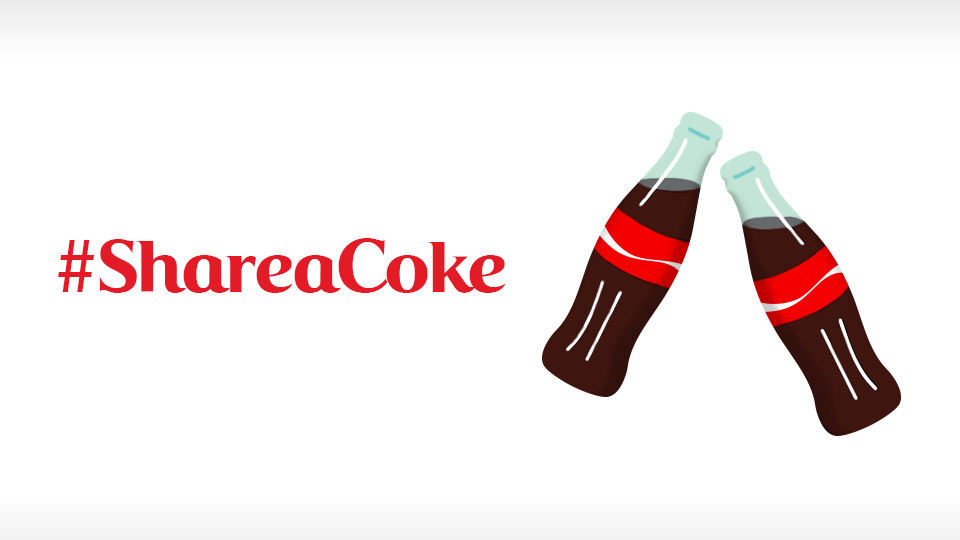
The hashtag that launched a thousand twitter emojis
But how worth it really is it invest in a Twitter emoji campaign? Since the #shareacoke campaign debuted in 2015, the number of hashtag/emoji campaigns has skyrocketed up; what value do these little emojis hold that are making them mass hits?
The benefits are threefold:
Create Campaign Hype
Having a visual next to your hashtag will instantly create an association in people’s mind, and creates hype around the campaign. It separates your hashtag from other hashtags that may be similar, and even after the campaign ends, people will be left with the imprint reminder of your campaign. Additionally, it allows the user to create an emotional bond to the campaign that a text-only hashtag simply would not be able to achieve. The reason emojis are so popular is that people connect to them emotionally. Is your campaign cool? Funky? Nostalgic? Whimsical? The Twitter emoji’s art style paired with your hashtag will help determine this and will shape how people perceive the campaign overall. Yea, it’s that important.
Promotes Interaction Around the Campaign
A hashtag creates a quick avenue for a community to be built around the hashtag, and in turn around your campaign. Once again, the visual element greatly helps people quickly recognize the hashtag, so they’ll be able to click on it and begin to interact with others who are also using that hashtag. This creates a feedback loop where those who are interacting with each other build on the conversation and continue to use the hashtag, keeping it active for others to see in their timelines and become interested in!
It Improves the ‘stopping power' of your Tweet
Twitter users cumulatively generate millions of tweets a day, so the average user is scrolling quickly down an array of hashtags. Internally, Twitter refers to tweets and hashtags that hold people’s attention and pause them in their action of scrolling ‘stopping power’—essentially, it’s a level of retention that determines how effective a campaign is going to be in a user’s mind.
Twitter found that the stopping power of tweets with emojis increased by 10%, and if those tweets were promoted, that figure jumped up to 6x their previous impressions.
Case Study: Christopher Robin
For the release of their new movie Christopher Robin, Disney asked BTM to help them with their Twitter campaign, and we were more than happy to oblige! Christopher Robin was a movie steeped in nostalgia, so we definitely wanted to play up that angle and create emojis that felt timeless and resonated emotionally with the user. They actually had five hashtags, one for each of the ‘major” characters in the movie as well as one for the movie title:

Lovingly rendered above are #Pooh, #ItsPiglet, #Eeyore, and #Tigger! All for Disney's #ChristopherRobin!
This was one of our first Twitter emoji campaigns, as well, so we were very excited and curious to see how it would fare. The thought was that users would have an emotional reaction to the characters’ faces and thus use the hashtags because of it.
Once the hashtags were live, we monitored the hashtags to see how they were doing. Sure enough, almost immediately we began seeing tweets that reflected nostalgia beyond what we even expected. Some users were tweeting specifically for seeing the hashtag characters!

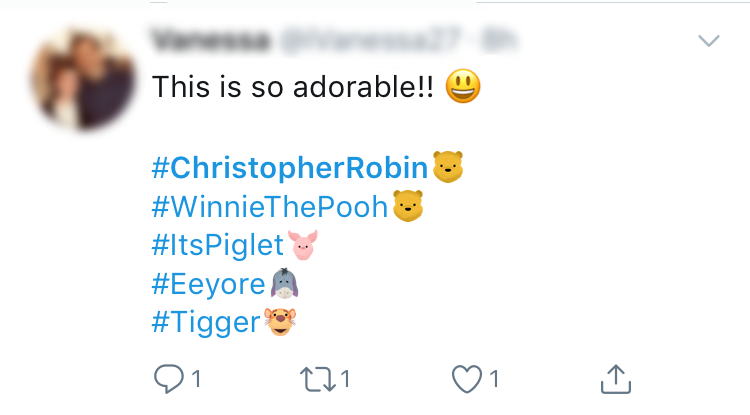
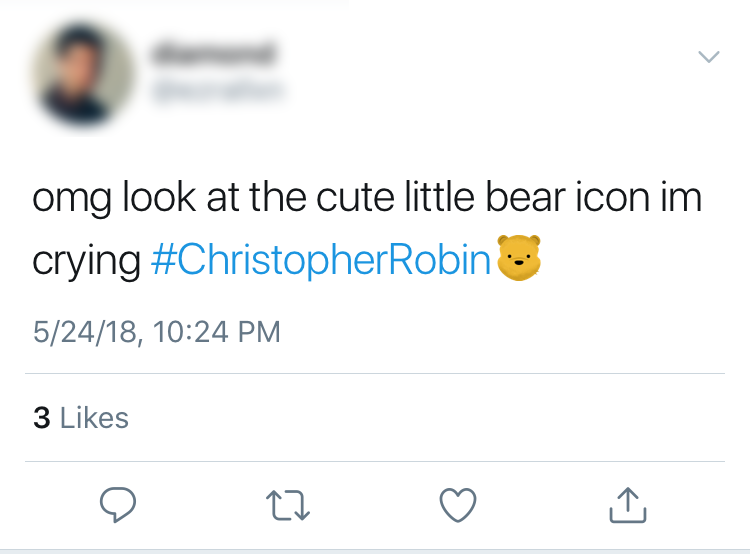
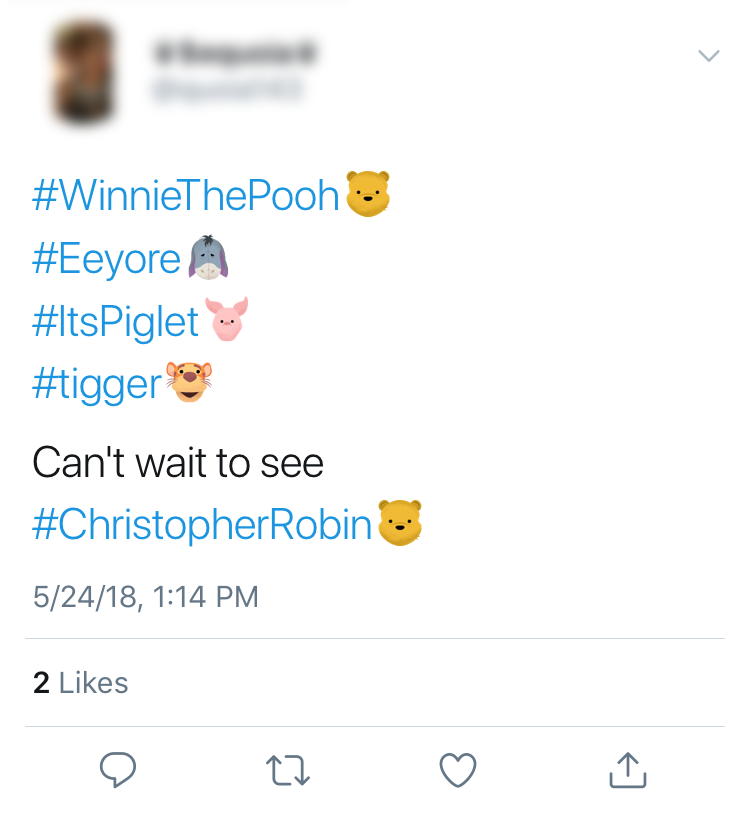
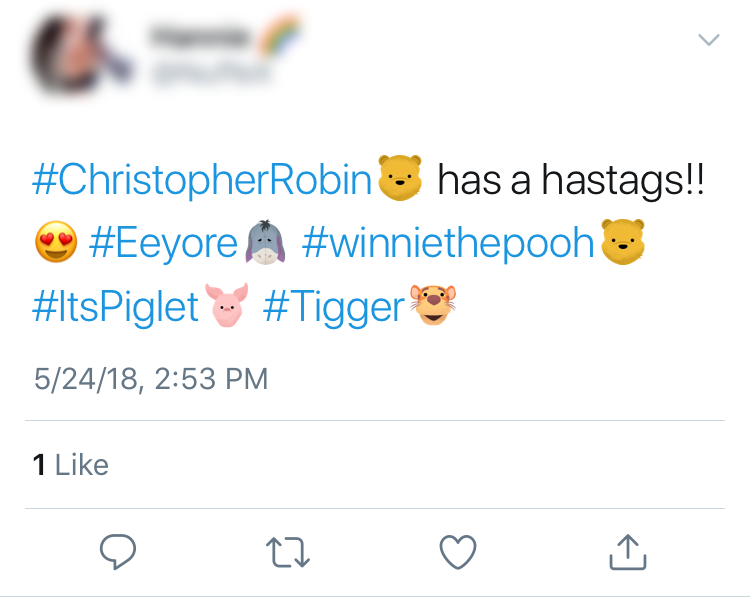
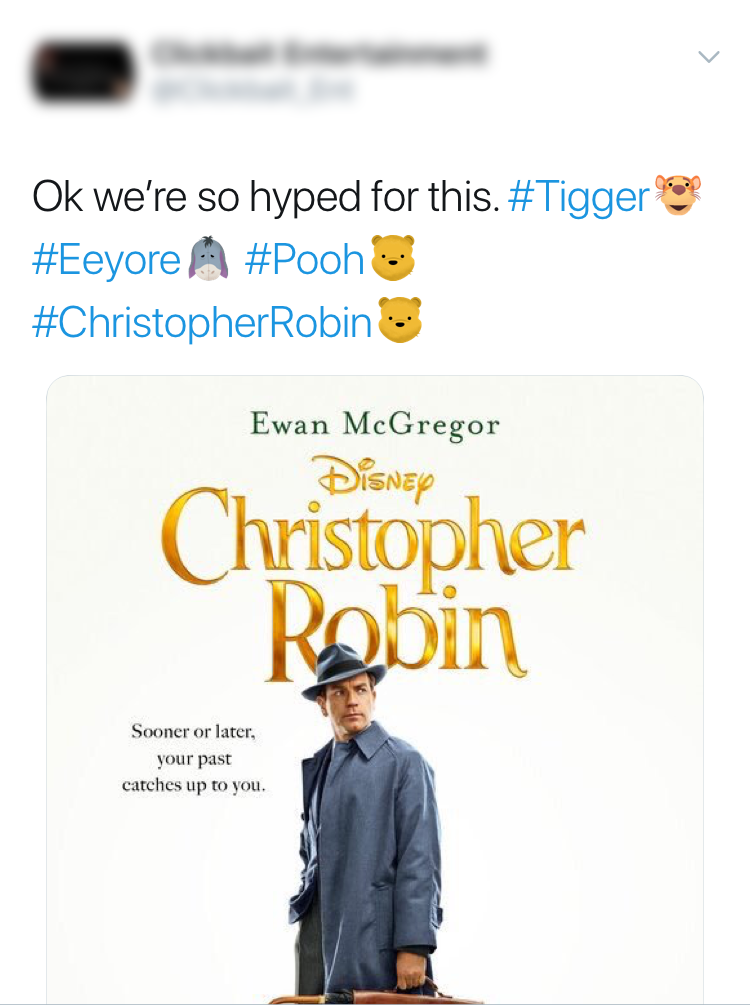 So for your brand’s next ad campaign, consider utilizing the power of Twitter emojis! And if you need someone to help you out, hit us up!
So for your brand’s next ad campaign, consider utilizing the power of Twitter emojis! And if you need someone to help you out, hit us up!
We Can GIF It
Be A Trendsetter, not a Follower
Keeping up with the trends in today's society is the priority for brands who adhere to the schema of remaining relevant. They need to understand what conversations their consumers are having, what’s important to them, and prove that they are also a part of this conversation.
What if I told you that’s the wrong approach to take?

Brands need to start the trend, not catch up to it. Trying to appeal to an audience using memes won't win you any brownie points with consumers—it’s too transparent for the hyper-jaded consumer of today and rings so hollow it may actually push your audience away. They are too aware of the 'corporate' image, and view the attempt like an adult trying, embarrassingly, to relate to youth using what they perceive as 'the new culture' but in inexperienced, and incorrect, ways.

For brands who want to proactively expand their audience, the solution is a little different: to insert themselves into their consumer’s popular culture and become the medium through which the conversation is had in the first place. And in 2018, the form of discourse is memes, and specifically memes through GIFs.

There is one clear champion of GIFs: you might have heard of them, but in case you haven’t it’s a huge meme depository called GIPHY. It’s a free, online platform that lets users upload their GIF content and access this content through a whole host of platforms including: Facebook Messenger, Instagram, (and most recently, Instagram DMs), Snapchat, Twitter, Viber, Slack, Discord, Outlook, and seriously, there’s MORE.
What does this mean? It means that putting your content on GIPHY makes your content as ubiquitous as GIFs have become across the internet. Given that, it’s amazing that it’s remained fairly underutilized by brands has a whole.
The Way Forward
Maintaining a GIPHY channel is great for brands who have high or low recognition alike. After creating the GIF content, they just need to be uploaded and tagged appropriately. From there, the tags will do all the work and users will find and spread the GIFs (literally) everywhere. It’s free marketing, but more than that, it’s the creation of a culture around the brand.
If brands are worried about maintaining the channel themselves, or are unsure about how to go about optimizing search results, fear not! There are companies who will help you create and manage your GIPHY channel (like us!) Although it will come at a price, the recognition that stands to be gained and the opportunity to insert your brand into the cultural lexicon is worth the hassle.
In fact, in this sense GIPHY can be even more advantageous to brands who aren’t well known. What better way to build your brand than by letting it expand organically through conversations that consumers are having? You can tailor the image you want by the content you upload and then wait to see how your consumers use the content you’ve created.
So while other brands struggle to remain a part of the conversation, those brands on the social beat will recognize the importance of being a part of the language spoken.

Pushing your Headlines into the Spotlight
The Challenge
It’s every brand’s dream to stand out amongst the crowd, and every marketer’s goal to help their brand achieve that dream.
In today’s world of exponential technological breakthroughs, marketing strategy has by necessity been evolving to complement—the Internet is the newest frontier for marketers looking to expand their brand. However, changes in marketing aren’t always revolutionary; sometimes, even little changes have a large impact on a brand’s identity and tone, and thus, the relationship with their consumers.
Pop-up and targeted ads, a long stalwart of advertising and marketing, have become taboo so companies are now looking to the next best strategy. People don’t want to be sold things anymore; in the new, transparent age, they’re looking for genuine connection.
The Solution
What does it take to connect to an audience? The answer may be simpler than you think:
Emojis!!! 😁😂❤️🌮🔥👍🤠
Emojis are ubiquitous in today’s world; which means there’s one for any demographic you’re looking for. They come in different skin tones, in a huge amount of objects, places, and even in travel symbols and signs. They add personality to otherwise-bland text and catch the attention of the community your brand is trying to appeal to because they’re connecting to the image on some emotional level.

Which one of these catches your attention the most?
Emojis are also the perfect way to show HOW you are saying something; emojis can be used ironically and sarcastically, which in itself helps frame the brand’s relationship with their consumers: are they cool and edgy? Professional? Fun? There’s an emoji for that! There is no genre barrier: apps like CNNMoney have fully adopted emojis, with over 50% of their push notifications including at least one. In general, companies who’ve been early on the trend and incorporated emojis into their notification headlines have already received tangible, data-driven results. According to a study conducted by the entertainment platform LeanPlum, consumers open push notifications with emojis 264% more often than those without. Email subject lines that include emojis are opened 66% more, and applications that incorporate emojis receive a 26% lower uninstall rate.
Which one of these jumps out at you?
In short, emojis drive engagement. There is no aspect of a company’s goals that can’t be improved by adding a little emotion to help their consumers connect to them on an emotional level; whether the goal is to get hits on a webpage or sell a product, emojis can unify and enlarge your audience and their retention of your content.
The Takeaway
Emojis aren’t going anywhere; Twitter emoji campaigns, which allow brands to publish an image in tandem with their hashtag, have caught fire and are only picking up traction. Platforms like Slack allow users to upload their own, specific emojis so people can message in-jokes to each other. Emoji use and variance is evolving, and the farsighted brand will take measures to ensure that in a world where brands emote, they aren’t seen as ❄️☠️💤.
Give 'em the Ol' Razzle Dazzle: Digital Painting Applications in Messaging Stickers
Obi here!
As a digital illustrator at BTM my job requires me to cover everything from illustrating and creating images from scratch, to working on and building off of already existing assets.
Because of this, I have to be able to work in a variety of different styles, especially when it comes to working with already existing assets. An instance of this is BTM’s messaging stickers for Zagtoon’s Miraculous: Tales of Ladybug & Cat Noir.
To start this project BTM was supplied with a variety of assets, which included a mix of expertly rendered illustrations of Ladybug and Chat Noir, the two main characters from the show, and images of the 3D models used in the show. While the 3D models were fine, they were also distinctly different from the finished illustrations. When building a sticker pack keeping a consistent art style across the board is key. As the digital illustrator on the project it is my job to give em’ the ol’ razzle dazzle.

The first step in this process is addressing why some of the art looks different than others. The main difference is the hair, eyes, lighting and the places where the limbs got cut out of frame.

Next comes roughing out the general form over the 3d model, this includes adding parts that got cutout of frame and taking away the hard edges of the hair, so that it can be painted back to look less like a hard plastic model and more like actual hair.
After the general form has been established the forms and textures get refined and detailed. This stage includes painting her hair, eyes, touching up various parts of her face and further refining the areas of her figure were extended.
With some of the details, such as the mesh texturing on Ladybug’s body suit, it was faster to extract the pattern from other areas of her suit, build the flat texture in another document, and map it to the areas that required it.
With the form and details rendered, it’s time for lighting. With various blend modes and opacity layers I simulated more dynamic, colored lighting, which further pushed the contrast and helped to match the style of illustration used in the finished assets BTM received.
To finish the edits, a final rendering of any small details and a layer of low level noise to unify the piece are applied.
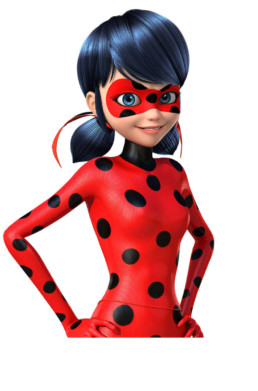
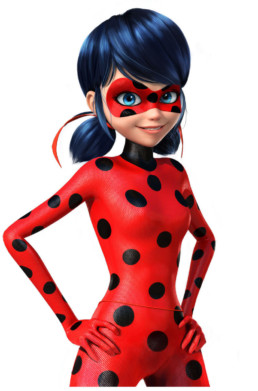

Voila! C’est Ladybug!
Building a Better Bee Beard
Building a Better Bee Beard
I’m Lahna 🤠
I’m primarily an AR lens programmer here at BTM, but I also help out with illustrations.
The decline in honey bee health is a very important issue all around the world. So for National Honey Bee Day we wanted to contribute our skills as a company to help the honey bee gain more attention.
The goal was to create Snapchat augmented reality lens that gave you a beard made of bees that flew off when you shook your head. This concept was an attempt to debunk the idea that a swarm of honey bees is a dangerous entity. Swarming honey bees are when they are most calm and passive since they have no home to defend. Which is why beekeepers have no fear when they show off a beard of bees! Also, it looks cool.
We thought of two ways we could go about it:
- Position so many bee objects around the face that it looks like they have conglomerated there into a natural beard shape
- Create a static, textured mass that resembled a beard and then cover it in actual moving bees to save on tri count.
We decided to start with plan A just so we could work on the head-shaking and bee navigation while our technical artist expertly modeled, rigged, and animated a bee for us to work with. We used spheres of the approximate size of what the bee object would be until she was finished.
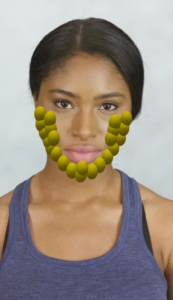
We whipped up a script to detect when a user was shaking their head and partnered it up with a system that monitored all bees and their states. This triggered random bees to fly off the face every time the user shook their head a certain number of times.
I was then sent the bee proxy to more properly craft the shape of the beard until the full textures and animations were complete. Substituting them back in took a long time because of a weakness of Snapchat’s AR engine that we didn’t understand — but would come to terms with later.
In order for the bees to appear more realistic when they are flying, we wanted to add a little flying loop as the come back to the face. So, we added a looping state in there as well.
Eventually, the animations were finished and it was time to replace all proxy bees with proper bee objects. This took an even longer time and we didn’t yet know why; each bee was just taking forever to select.
After trying to put a certain amount of bees on the face, the engine kept crashing. To the point where the project was un-openable.
We had well exceeded the suggested tri count for the engine, but it hadn’t stopped anything before. Other lenses were ten times over the allowed tris but worked fine.
We realized, however, the engine was worse when it came to an overload of the number of objects in the scene hierarchy. The engine could select an object on its own, but an object with dozens of children took a very long time to select…and because of the nature of the engine each imported bee was broken up joint by joint into their own objects.
So it was time for plan B. We made up a beard-shaped object but no matter how hard we tweaked it it just couldn’t look right because the surface needed to be covered in bees for it to be believable anyway. We remade the scene from scratch, using the old scripts. There were three kinds of bee objects:
- Static bees with very few tris, to make up the bulk of the beard
- Idly animating bees that never leave the face
- Bees with animations built in that let them take off, fly, and land
This set of solutions worked surprisingly well! And after that, we put an overlay filter and some sparkles on it and called it a day!
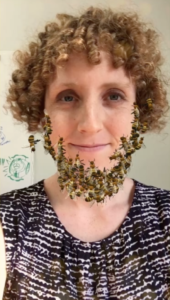
Check out the finished result for yourself: http://tinyurl.com/beardofbees
Decrypting the Emoji Code
In the modern mobile world, everyone knows what an emoji is. There’s a “standard set” of emojis we’re all familiar with that are available whether you’re using your iPhone, Android, or computer device, with new ones rolling in and even personalized-to-app emojis.
However, do you ever stop to think about how new emojis are added, or who even came up with the old canon? They’re just there; one day they weren’t, and the next day they were! Read onwards and have the mystery of the Emoji Code unraveled!
The Set Canon
Designer Shigetaka Kurita invented the emoji in 1999 to circumvent NTT DoCoMo’s message-character limit (at the time, 250, a la early Twitter). He drew inspiration from picture-based Chinese “Kanji” characters and, armed with a 12x12 grid, created the first set of emojis using common expressions and thoughts he felt were relatable and cute (and would save textual space!). This set was immediately introduced into most of Japan’s mobile products, but their competitors soon took artistic license and released emojis of their own; copying Kurita’s expressions but rendering them in a different style.
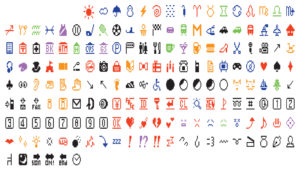
Shigetaka Kurita, NTT DOCOMO. Emoji (original set of 176). 1998–99. Software and digital image files.
Gift of NTT DOCOMO Inc., Japan
Initially, this caused quite a bit of chaos and miscommunication because a user of one company’s emoji could not see any other another company’s emoji. However, in 2005 carriers began to match incoming signals with their emoji sets and switch them over, and after Apple’s 2007 iPhone globalized them, the Unicode Standard was created so that your poop emoji will send to any device.
New Emojis
New emojis introduced into the existing canon are decided by the Unicode Consortium, which sounds like a bona-fide secret society right out of a sci-fi novel but is an actual, real-life organization whose goal it is to enable everyone to be able to use a computer and express themselves with pictures! However, the individual designs for the emojis are left at the discretion of the companies making them; the biggest players being Apple, Microsoft, Samsung, and Google. As a result of this, each of these big-name platforms (and other smaller-name ones) has their own emoji for the same expression.
The Gun Emoji
Take for example, the gun emoji, which was one of the most controversial emojis out there at the time of its creation and is still interesting today because of the fluctuating gun climate in the USA. Upon its inception, none of the platforms had the same one, and some even went as far as to use squirt guns instead of actual guns. There were also companies that started with real guns but changed them to squirt guns at a later date (and in Microsoft’s case, vice-versa). See the chart below:
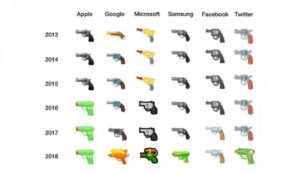
Source: Emojipedia / Emojipedia
Obviously, squirt gun to lethal gun emojis can totally change the tone of a message and actually cause confusion if two users were receiving different images.
It’s worth noting that Apple was the forerunner in changing their gun emoji to the squirt gun we see now. After Apple changed theirs, most companies followed suit partly due to personal value but also because they are trying to create an emoji culture where there is as little confusion as possible, a mission that as designers ourselves we can absolutely appreciate.
Facebook has also announced that they will be removing their gun emoji and replacing it with a squirt gun, although that change hasn’t happened yet. This means every major platform has changed from a real gun to a squirt gun.
Sources:
https://www.webdesignerdepot.com/2016/10/the-surprising-history-of-emojis/
Six Reasons Stickers & GIFs are Effective for Marketing
Marketing is constantly evolving around the consumer, and during the Age of Technology it’s evolving at a more rapid pace ever; it can be difficult for marketers to know whether or not they’re on the uptake or being left behind. Perhaps the most underrated game-changing tool for marketers are animated stickers and GIFs. Although many still use video, this format is frankly out of date for the modern internet user. According to a survey conducted by Harris Poll, a whopping 71% of Americans would rather send a digital sticker over a block of text. With such a large user base, it’s no surprise more and more companies have been seizing the opportunity to make branded stickers and GIFs to seamlessly integrate their brand into their consumer’s daily life. We partner with these companies to make their brand come alive within mobile conversations. However, not all companies are aware of the wide gamut of opportunities afforded to them across platforms or the sheer flexibility stickers and GIFs inherently have.
1. Custom Twitter Emojis that create trending hashtags:
Companies can pay Twitter to attach a custom emoji to a Twitter hashtag for a period of time. Then, whenever someone uses their hashtag the emoji automatically comes with it! The brand’s hashtag instantly stands out with its unique emoji and helps create a community around the product.
Recently, we collaborated with Disney on a campaign for Christopher Robin and other upcoming titles, including creating a range of twitter emojis to promote the film and make the hashtags appealing, relevant, and most importantly create the cute Pooh-bear association to the Christopher Robin movie in people’s minds. We managed the storyboarding, sketching, and illustration for these emojis.
2. Clickable Branded Stickers:
A branded sticker campaign’s main objective is to organically increase brand awareness and engagement. To that end, stickers are a revolutionary tool because it enables marketers to have their brand present in their customers everyday conversations across mobile. In other words, their brand becomes a permanent part of their customer’s life.
A good example of this is Lovate Health’s MuscleTech stickers, promoting their MuscleTech brand of products. These stickers are centered around and cater directly to the consumer base that uses MuscleTech products; as a result, they end up using them a lot because the sentiments and in-jokes are relevant to them. This entrenches MuscleTech further into the community in a feedback loop that keeps both the company and the consumer happy, and helps new initiates to the community naturally find their product in a sea of competitors.
Lovate Health has taken it even further by making their stickers clickable. These stickers, when sent, allow the receiver or sender to click the sticker and be redirected to a website, the app, or the app store. This is brilliant because users are able to interact with the images being received and has quick access to the company’s brand. They also allow people to send links to products they enjoy in a fun way!
3. Sticker Markets on Messengers:
Stickers and messengers go hand-in-hand, creating a demand for sticker marketplaces, which offer a wide variety of branded emojis and keyboard and almost functions as an advertising playground.
In 2016, around 50% of all mobile users used at least one form of mobile messenger, according to Stastia. The fact that since then, messenger apps continue to add free features like video calls, encryption and social media means that usage has only been increasing. Sticker marketplaces have also grown in kind, and many of mobile messengers have created their own sticker markets that draw users to their specific platform.
Apple and Facebook are leaders in this industry with their respective iMessage and Messenger platforms; in total, over 1 billion stickers sent on them. We’ve has observed the intense popularity of stickers it created for the mobile game Plants Vs. Zombies, which had 1 million downloads 4 days, and 2.5 million downloads in a week with over 100 million impressions.
4. Everyone is a Brand Ambassador:
This was touched upon briefly in point number two, but one of a branded sticker’s major selling points is the seamless integration into a consumer’s life: in other words, converting that customer into a brand ambassador.
This is one of the most effective ways of creating brand ambassadors because people are sending these stickers to their friends organically; they love the content and they are spreading the brand to all of their friends in a win-win scenario. Furthermore, people who are friends tend to be in similar target markets, which means having stickers so your customers can share your brand with their friends is the ideal way to spread your brand.
5. They Can Reach New Audiences
Stickers are an important bridge that connects companies to a younger audience in a charmingly appealing way. In an age where this younger audience has been collectively groomed to ignore the millions of ads they see every day, stickers appeal as authentic and fun, leading more of this audience to be attracted to and spread your brand (in the form of stickers). Sometimes you even get people who were previously unaware of your brand but will buy sticker packs because of artistic appeal or funny witticisms, which could convert them into customers. If not, they’ll at the very least be creating more brand awareness for your brand.
6. They Have Potential for Going Viral
Some of these sticker apps/packs go viral and have millions of downloads. Although not a guarantee, the possibility is always there and because stickers are created to be spread on the internet, where the phenomenon of “going viral” first appeared and retains the farthest reach, it is a direct line to the culture that facilities going viral.
Overall, the existence of stickers as a marketing tool has opened a completely new avenue for brands and consumers to communicate through. Instead of having their message get “lost in textlation”, customers can augment their thoughts with your brand, without losing what they want to say.
Most importantly, they can do it in a way that feels fun and cool and makes them feel good, which will push them to keep doing it. People can show who they are by sending stickers of TV shows, music, or quotes they like from pop culture that curate their personality by showcasing the communities they’re a part of and appealing to others like them. In layman’s terms, stickers/GIFs are great for showing some personality!
